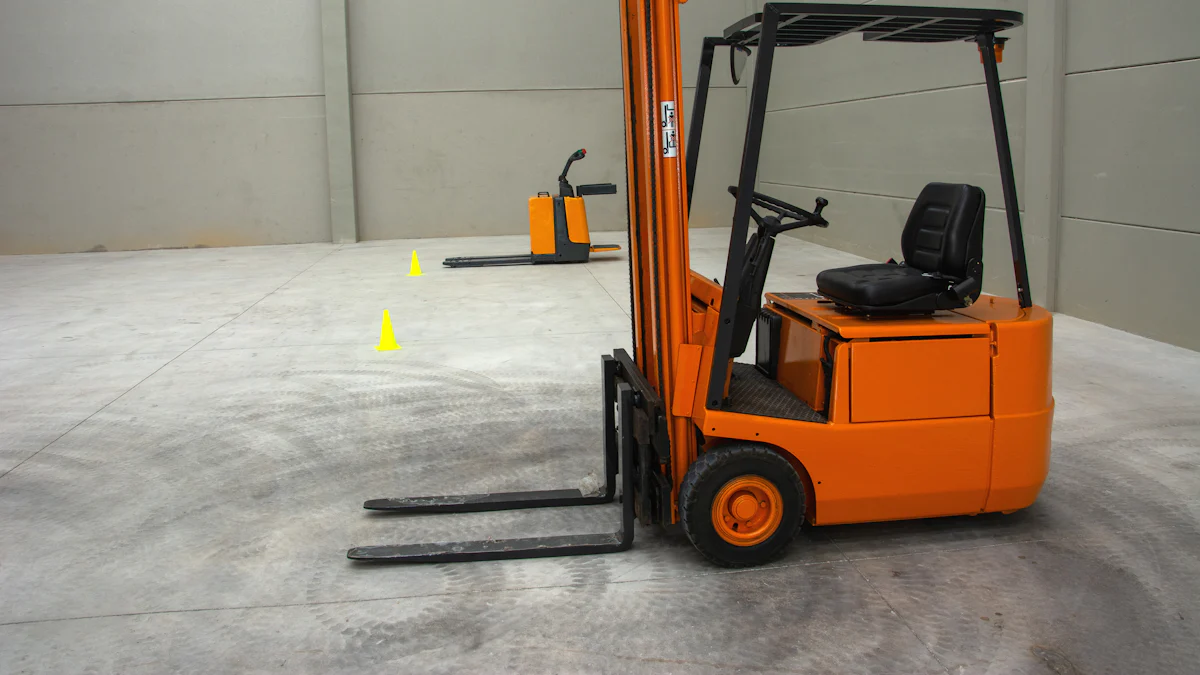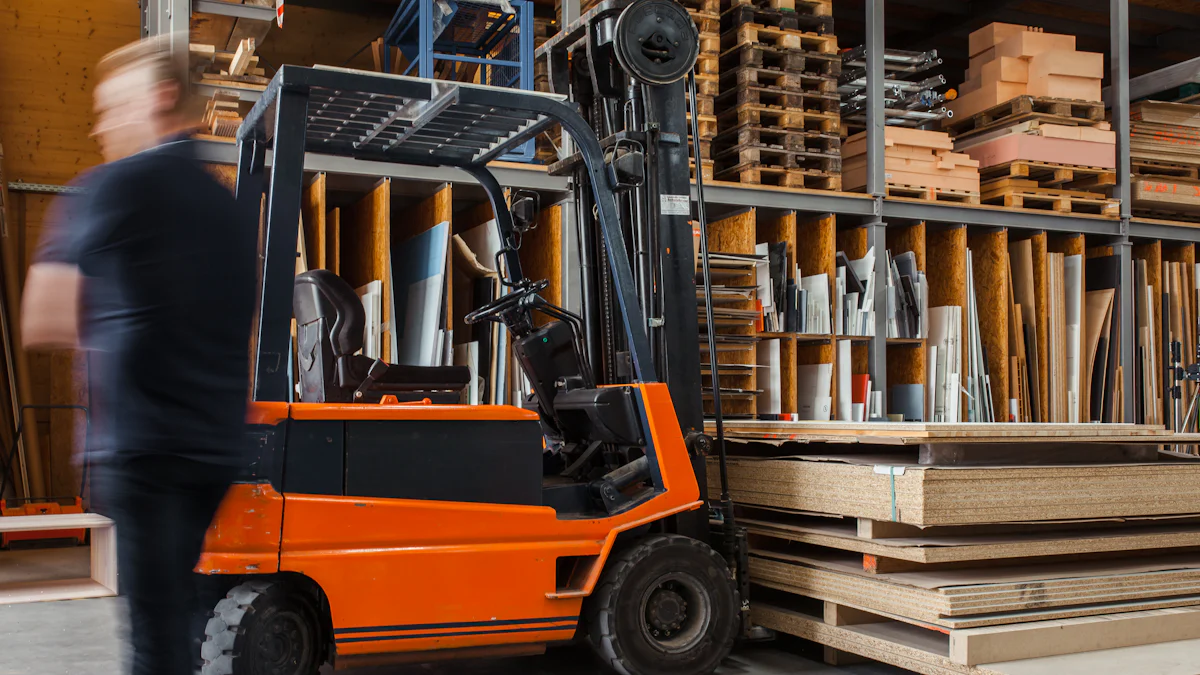Pallet jacks play a crucial role in the efficient movement of goods within industries. Understanding the pallet jack dimensions is key to optimizing operations and ensuring workplace safety. In this blog, we will delve into the significance of these dimensions, explore standard sizes, and discuss variations that cater to different needs. Let’s unravel the world of pallet jacks and discover why knowing their standard size pallet jack dimensions is essential for seamless material handling.
Understanding Pallet Jacks
When considering the realm of material handling, pallet jacks stand out as indispensable tools. These devices, also known as pallet trucks or pump jacks, serve a vital function in various industries by facilitating the movement of goods within warehouses and distribution centers. Understanding the intricacies of pallet jacks is crucial for optimizing operational efficiency and ensuring workplace safety.
What is a Pallet Jack?
Definition and Purpose
A pallet jack is a manual or electric tool designed to lift and transport pallets with ease. Its primary function revolves around lifting pallets off the ground using hydraulic power, allowing users to maneuver heavy loads effortlessly. This equipment typically features two forks that slide beneath a pallet, enabling users to elevate and transport goods across short distances.
Common Uses
The versatility of pallet jacks makes them invaluable assets in various industries such as logistics, manufacturing, retail, and more. These tools are commonly utilized for tasks like loading and unloading trucks, moving inventory within warehouses, and organizing goods on shop floors. Their ability to streamline material handling processes makes them essential for businesses aiming to enhance productivity and operational efficiency.
Importance of Pallet Jack Dimensions
Efficiency in Operations
Understanding the dimensions of a pallet jack plays a pivotal role in enhancing operational efficiency. By knowing the exact measurements of the equipment, businesses can ensure that it aligns perfectly with their specific needs. Whether it’s maneuvering through narrow aisles or fitting into designated storage spaces, having precise knowledge of pallet jack dimensions enables seamless workflow management.
Safety Considerations
Safety should always remain a top priority in any workplace environment utilizing pallet jacks. Being aware of the dimensions ensures that operators can safely navigate through crowded areas without risking collisions or accidents. Additionally, understanding the size constraints helps in preventing overloading situations that could compromise both employee safety and product integrity.
Standard Size Pallet Jack Dimensions

When it comes to pallet jacks, understanding the standard size dimensions is crucial for seamless material handling operations. Let’s delve into the specifics of these dimensions and explore how they impact the efficiency and safety of warehouse activities.
Standard Dimensions
Width and Length
The standard size of a pallet jack typically ranges from 18 to 24 inches in width and 48 to 60 inches in length. These dimensions ensure compatibility with standard US pallets, which are 48 inches long and 40 inches wide. By adhering to these measurements, businesses can guarantee smooth handling of goods within their facilities.
Height Range
In terms of height, a pallet jack usually stands between 6 and 8 inches tall. This height variation allows for adequate ground clearance while ensuring stability when lifting and transporting heavy loads. The ergonomic design of pallet jacks considers this height range to provide operators with optimal control and maneuverability during material handling tasks.
Variations in Dimensions
Narrow Pallet Jacks
For facilities with limited aisle space or narrow storage areas, narrow pallet jacks offer a practical solution. These specialized jacks are typically 27 inches wide by 48 inches long, making them ideal for navigating tight spaces while still accommodating standard 48” x 40” pallets. Their compact design enhances maneuverability without compromising load capacity, making them suitable for efficient operations in constrained environments.
Mini Pallet Jacks
In contrast, mini pallet jacks cater to settings where space optimization is paramount. With their more compact dimensions, these jacks are well-suited for small warehouses or retail environments that require agile material handling equipment. While sacrificing some load capacity compared to standard models, mini pallet jacks excel in maneuverability and versatility, allowing businesses to maximize storage efficiency without compromising on functionality.
By understanding the variations in pallet jack dimensions, businesses can select the most suitable equipment based on their operational needs and spatial constraints. Whether opting for a standard-sized jack for heavy-duty applications or choosing a specialized model for confined spaces, aligning the dimensions with specific requirements is essential for optimizing workflow efficiency.
Types of Pallet Jacks

Manual Pallet Jacks
Manual pallet jacks are a popular choice for businesses seeking cost-effective and straightforward material handling solutions. These jacks offer simplicity in operation, making them ideal for lighter loads or smaller warehouses. With their manual lifting mechanism, manual pallet jacks provide a practical and efficient way to transport goods within limited spaces.
Features
- Cost-Effective: Manual pallet jacks are budget-friendly options for businesses looking to streamline their material handling processes without significant investments.
- User-Friendly: The simplicity of manual pallet jacks makes them easy to operate, requiring minimal training for employees to start using them effectively.
- Lightweight Design: Their compact and lightweight construction enhances maneuverability, allowing operators to navigate through narrow aisles with ease.
Uses
- Retail Environments: Manual pallet jacks are commonly utilized in retail settings for stocking shelves, moving inventory, and organizing products on the shop floor.
- Small Warehouses: Businesses with limited storage space often rely on manual pallet jacks for efficient movement of goods within confined areas.
- Loading/Unloading Trucks: These jacks play a crucial role in loading and unloading trucks, ensuring smooth logistics operations.
Electric Pallet Jacks
Electric pallet jacks offer advanced functionality powered by batteries, making them suitable for larger warehouses or operations dealing with heavier loads. These motorized tools provide automated lifting and movement capabilities, reducing operator fatigue and enhancing overall efficiency in material handling tasks.
Features
- Battery-Powered: Electric pallet jacks operate on rechargeable batteries, eliminating the need for manual effort during lifting and transportation.
- Motorized Movement: The electrically powered system enables smooth and controlled movement of heavy loads, enhancing productivity in demanding work environments.
- Enhanced Efficiency: By automating lifting functions, electric pallet jacks optimize workflow efficiency and reduce labor costs associated with manual handling.
Uses
- Large Warehouses: Electric pallet jacks are well-suited for large warehouse facilities where frequent movement of heavy loads is required.
- Heavy-Duty Applications: Businesses dealing with substantial cargo benefit from the enhanced lifting capacity and efficiency provided by electric pallet jacks.
- Reducing Operator Fatigue: The motorized features of electric pallet jacks alleviate physical strain on operators, promoting a safer and more ergonomic work environment.
By understanding the distinctions between manual and electric pallet jack models, businesses can make informed decisions based on their operational requirements. Whether prioritizing cost-effectiveness and simplicity or opting for advanced automation capabilities, selecting the right type of pallet jack is essential for optimizing material handling processes.
Choosing the Right Pallet Jack
Assessing Your Needs
Load Capacity
When determining the appropriate pallet jack for your operations, it is essential to first evaluate the load capacity requirements. Understanding the weight of the heaviest items you intend to transport will guide you in selecting a pallet jack that can efficiently handle these loads. By considering the load capacity upfront, businesses can prevent operational delays and ensure smooth material handling processes.
Space Constraints
In addition to load capacity, assessing space constraints within your facility is crucial when choosing a pallet jack. Measure aisle widths, storage areas, and any other confined spaces where the equipment will be utilized. By identifying spatial limitations beforehand, businesses can avoid potential obstacles during material movement and select a pallet jack that aligns with their spatial requirements.
- Understanding pallet jack dimensions is crucial for determining the best way to use it for specific needs.
- Selecting the right pallet jack is essential for maximizing productivity, streamlining operations, and ensuring workforce safety. Investing time in research and understanding options leads to finding a pallet jack that empowers the team.
Post time: May-28-2024
